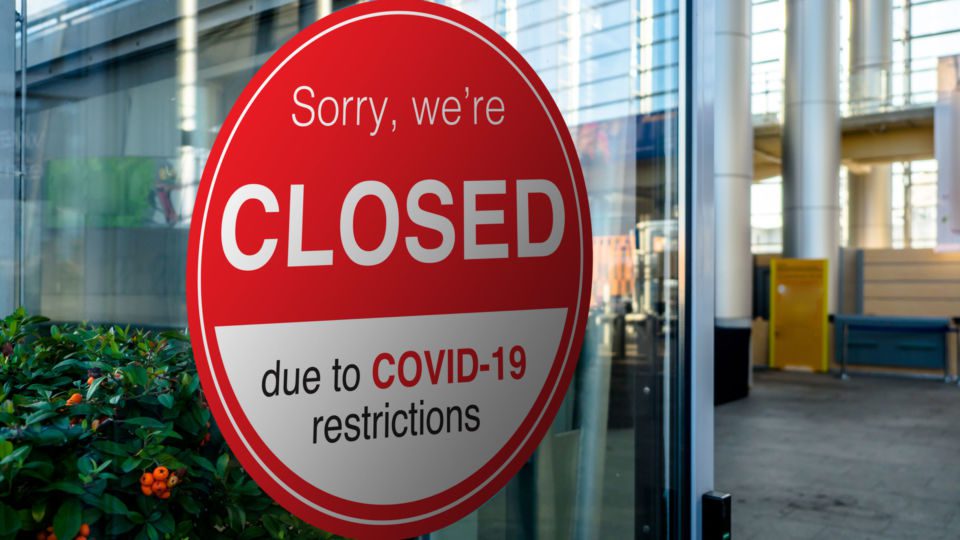 The COVID-19 pandemic has been particularly tough on small businesses. From March to August 2020 alone, about 91,000 permanent business closures were reported on Yelp. Now a wide-scale reopening is on the horizon, thanks to increasing vaccination rates. But if your business has made it this far, you may still be looking at a difficult winter and spring before business returns to normal again.
The COVID-19 pandemic has been particularly tough on small businesses. From March to August 2020 alone, about 91,000 permanent business closures were reported on Yelp. Now a wide-scale reopening is on the horizon, thanks to increasing vaccination rates. But if your business has made it this far, you may still be looking at a difficult winter and spring before business returns to normal again.
To survive — and even thrive — during this challenging period, look to the lessons of the recent past. The first round of lockdowns taught us that consumers value their safety when shopping in a pandemic. To slow the spread of COVID-19, they prefer payment technology that reduces contact with store employees as well as any surfaces that might carry the virus — while also making checkout as seamless and easy as possible.
COVID-19 has changed consumers’ expectations for shopping, payment options included. By embracing these changes, you’ll show shoppers you understand and care about their needs, strengthening the customer relationships that are the lifeblood of any small business. Here are three lessons about adaptation in payments we learned from last year’s lockdowns.
Embracing the shift to new payment options
By supporting omnichannel, contactless and unattended payment options, your business can keep shoppers safe during the pandemic while also improving the shopping experience for the long term.
Advertisement
3. Contactless payments avoid spreading germs and speed up checkout
While contactless payments were already on the rise before COVID-19, the pandemic accelerated adoption. According to NMI research, nearly 30% of customers don’t feel comfortable paying with cash during the pandemic, and over half (53%) use contactless payment methods “often” or “very often” when shopping in-store.
Large retailers like Walmart were quick to implement contactless payment options within weeks of the first lockdowns in the U.S. To remain competitive during and after the pandemic, small businesses must do the same.
Whether customers pay by tapping a credit card, tapping a phone, scanning a QR code or some other method, contactless payments minimize contact with potentially contaminated surfaces, reducing the spread of germs. They also speed up checkout since customers don’t have to sign receipts or type in PINs. Investing in a contactless payments solution that works for your business will help your customers feel safe now — and provide a more seamless shopping experience after the pandemic.
2. Omnichannel payment supports frictionless shopping experiences
Online shopping has skyrocketed in popularity during the pandemic as customers seek to minimize time spent in shared public spaces. Besides traditional delivery options, shopping features like buy online, pick up in store (BOPIS) blend frictionless e-commerce experiences with the convenience of quickly dropping by a brick-and-mortar store. Other common shopping features also bridge the online/offline gap, such as loyalty programs that link to purchases made both online and in-store.
Support the integration of in-person and online shopping by taking an omnichannel approach to payment. By providing a unified payment experience across all channels, you’ll make shopping features more seamless no matter where the customer makes their purchase. Maintaining a consistent experience across platforms also helps build your small business’ brand, bolstering those all-important customer relationships for the long term.
3. Self-checkout reduces the spread of germs and cuts costs
The pandemic increased the appeal of self-checkout and other unattended payment options, as they enable customers to avoid contact with a human cashier. However, these technologies have other advantages beyond reducing COVID-19’s spread.
By enabling you to serve more customers without hiring more staff, they keep costs down — which is especially important to a small business that may be operating on a tight margin. By reducing wait times, they also improve the customer experience and keep shoppers returning to your store.
Besides self-checkout, unattended technologies can include support kiosks, vending machines, hand sanitizer dispensers and more. If you carefully choose the right unattended options for your small business, they will be worth the investment long after the pandemic subsides.
The road to recovery
As small businesses strive to bounce back from the pandemic, innovation and agility is more important than ever. Don’t be afraid to try new things and experiment to find the payment options that serve your customers best. However you opt to combine contactless, omnichannel and unattended methods, tailoring your payments solutions to shoppers’ needs will build customers’ trust and keep you competitive with larger retailers — putting your business on the fastest road to full recovery.
Jennifer Sherman is an enterprise software design aficionado whose world is product management. She plays a significant role in creating the vision and roadmap for NMI’s existing and next generation solutions designed to empower unified commerce. Her passion is to make the buying experience as frictionless and invisible as possible, whenever and wherever consumers transact. A 20-year technology product management veteran with deep Oracle roots, Sherman was recruited by Vista Equity Partners to elevate product management within their portfolio of startup companies. During stints at Kibo Commerce, NAVEX Global and Aptean, Jennifer implemented software development and product management best practices, while helping the companies begin thinking about market and user needs and trends, versus responding to the loudest cries of “I need…”





